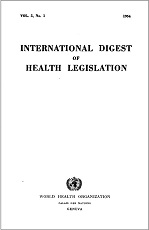Rebecca J Cook, Bernard M Dickens

Journal Extract
The problem of abortion is not primarily a problem of law. The law clearly addresses the social practice of abortion, it influences the means of practice and may, at its best, resolve the social consequences of abortion, but the problem of abortion is located in social experience and prevailing social philosophies, rather than in statute books and judicial decisions. Abortion lies at the heart of a number of concerns of particular sensitivity, but it can also have a severe medical and personal impact.
Cook RJ, Dickens BM. Abortion laws in African Commonwealth countries. J Afr Law. 1981 Autumn;25(2):60-79.

